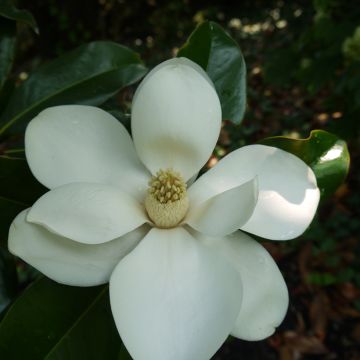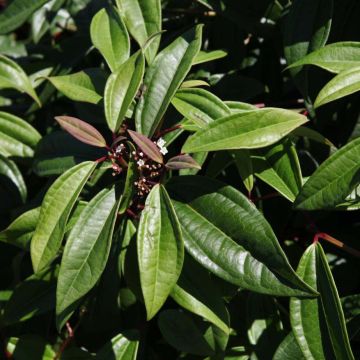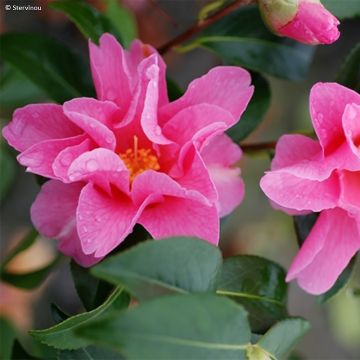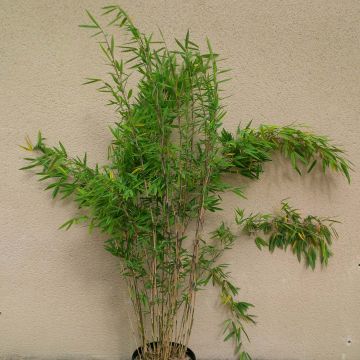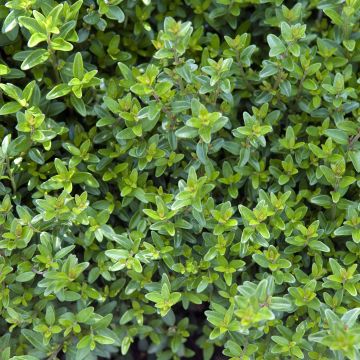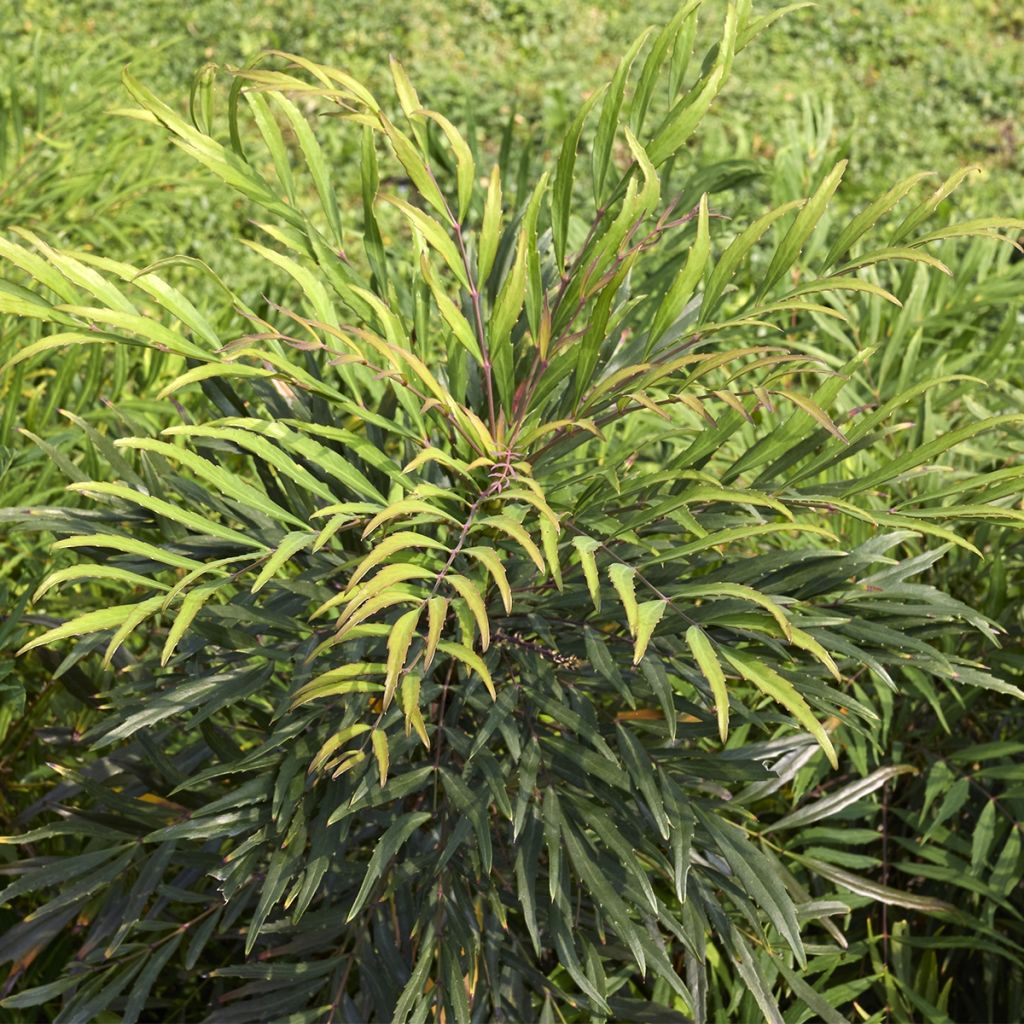

Mahonia eurybracteata Sweet Winter


Mahonia eurybracteata Sweet Winter
Mahonia eurybracteata Sweet Winter
Mahonia eurybracteata Sweet Winter
Mahonia
Very beautiful young plant that I have just planted at the bottom of a slight slope, well-exposed and sheltered in winter and shaded in summer.
Elisabeth, 18/03/2022
Why not try an alternative variety in stock?
View all →This plant carries a 24 months recovery warranty
More information
We guarantee the quality of our plants for a full growing cycle, and will replace at our expense any plant that fails to recover under normal climatic and planting conditions.
From €5.90 for pickup delivery and €6.90 for home delivery
Express home delivery from €8.90.

Does this plant fit my garden?
Set up your Plantfit profile →
Description
Mahonia eurybracteata 'Sweet Winter' is very different from other varieties of mahonia. Certainly, it is evergreen and offers its yellow flowering in autumn-winter like its counterparts, but its overall appearance is quite surprising. Far from the stiffness of other mahonias, 'Sweet Winter' stands out with its flexible and light foliage, and above all, it is non-spiny. Outside of the flowering period, it could easily be mistaken for certain ferns, such as Cyrtomium or others. Its compactness is also astonishing: while its cousins easily exceed 2m (7ft), it reaches a height of 1m (3ft) after 10 years. Planted potentially in full sun but preferably in partial shade, its exotic and highly sculptural aspect will find its place in a Japanese or contemporary garden.
With its bright yellow flowering appearing between November and January, 'Sweet Winter' brings comfort to the heart of the cold season, in all regions that cannot accommodate winter mimosas. Its long erect clusters are adorned with a multitude of small yellow flowers at a rare time for blooming. These give rise to decorative berries the colour of blueberries in late winter.
Its foliage is not to be outdone. Sculptural like all mahonias, its foliage is, however, non-spiny, which is a definite advantage. Due to its small size, it can be planted at the edge of a flower bed without fear of being scratched at every contact. This is especially important, as the lightness of the foliage entices you to run your hand across it as you would with a silky fabric! Remaining compact over time, it reaches a maximum height of 1.5m (5ft) and does not thin out at the base like many other varieties, which is another asset to its credit. A small shrub ideal for partially shaded situations, it should be planted in a location sheltered from cold winds, in moist, humus-rich soil. Its hardiness is moderate (-12°C (10.4°F) approximately); in very cold climates, it can be planted in a container to overwinter it away from severe frosts.
The distinctive aesthetics of this variety naturally encourages planting with shrubs such as nandinas and Japanese maples. Plant it with Fatsia japonica, with its large leaves to create a contrast of forms, or with Camellia sasanqua, which flowers at the same time for a varied blooming assortment, or with Hamamelis 'Diane' for the same reason. Similarly, hellebores at its base will ensure a beautifully flowered winter scene. A variegated Fatshedera lizei is another recommended companion for our little mahonia, as well as Hart's tongue fern, or even a Skimmia, whose bright red winter berries will respond to the dark blue of those of 'Sweet Winter'.
Mahonias belong to the Berberidaceae family, which includes about 700 species distributed in 18 genera, the most well-known of which are berberis, nandinas, and epimediums. In addition to the appearance of their often glossy and spiny leaves, these shrubs are easily identifiable by the yellow colour of their roots. This is due to the presence of berberine, a powerful alkaloid with pharmaceutical properties, traditionally used in Chinese medicine.
Report an error about the product description
Mahonia eurybracteata Sweet Winter in pictures


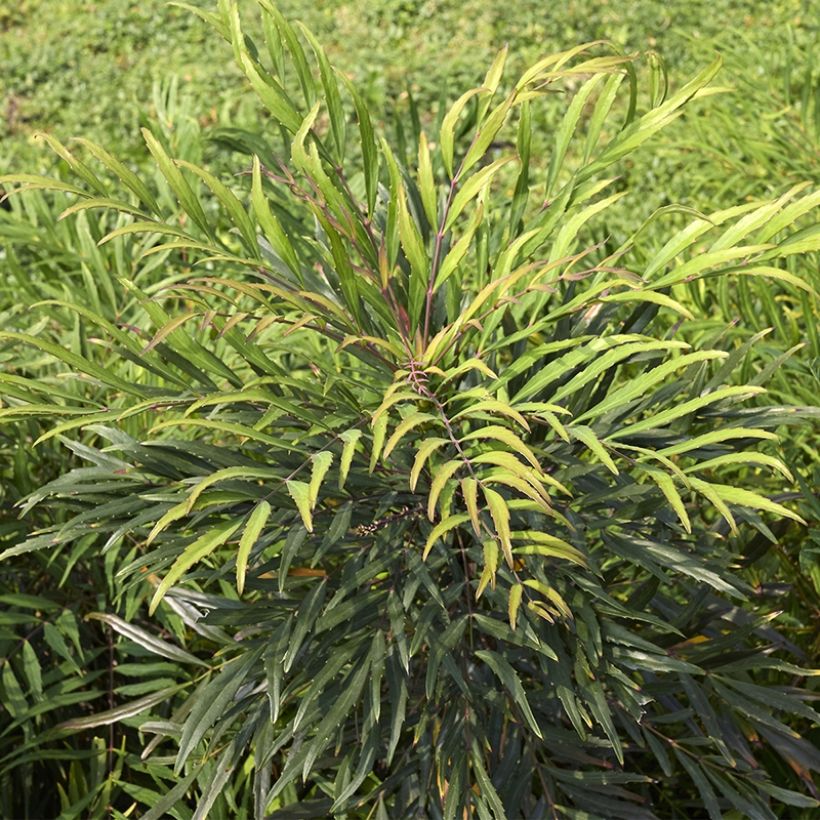



Plant habit
Flowering
Foliage
Botanical data
Mahonia
eurybracteata
Sweet Winter
Berberidaceae
Mahonia
Cultivar or hybrid
Other Mahonia
Planting and care
Plant ideally in partial shade or full shade (it can tolerate morning sun), in rich, deep and moist soil. It is tolerant of soil types, but it prefers moist and well-drained soil, especially during winter. In poor soil, it will be necessary to add compost mixed with the existing soil. In heavy soil, a layer of gravel should be added at the bottom of the planting hole for drainage.
This mahonia is moderately hardy (-12°C (10.4°F)) once mature, but young plants can be damaged by severe frost. Therefore, choose a location protected from prevailing winds and drafts if you live in a cold region.
In very cold regions, it is safer to plant it in a container. In this case, choose a slightly acidic to neutral potting soil (pH 6.2 to 6.5 approximately) and monitor watering in summer to keep the substrate moist.
Planting period
Intended location
Care
-
, onOrder confirmed
Reply from on Promesse de fleurs
Evergreen shrubs
Haven't found what you were looking for?
Hardiness is the lowest winter temperature a plant can endure without suffering serious damage or even dying. However, hardiness is affected by location (a sheltered area, such as a patio), protection (winter cover) and soil type (hardiness is improved by well-drained soil).

Photo Sharing Terms & Conditions
In order to encourage gardeners to interact and share their experiences, Promesse de fleurs offers various media enabling content to be uploaded onto its Site - in particular via the ‘Photo sharing’ module.
The User agrees to refrain from:
- Posting any content that is illegal, prejudicial, insulting, racist, inciteful to hatred, revisionist, contrary to public decency, that infringes on privacy or on the privacy rights of third parties, in particular the publicity rights of persons and goods, intellectual property rights, or the right to privacy.
- Submitting content on behalf of a third party;
- Impersonate the identity of a third party and/or publish any personal information about a third party;
In general, the User undertakes to refrain from any unethical behaviour.
All Content (in particular text, comments, files, images, photos, videos, creative works, etc.), which may be subject to property or intellectual property rights, image or other private rights, shall remain the property of the User, subject to the limited rights granted by the terms of the licence granted by Promesse de fleurs as stated below. Users are at liberty to publish or not to publish such Content on the Site, notably via the ‘Photo Sharing’ facility, and accept that this Content shall be made public and freely accessible, notably on the Internet.
Users further acknowledge, undertake to have ,and guarantee that they hold all necessary rights and permissions to publish such material on the Site, in particular with regard to the legislation in force pertaining to any privacy, property, intellectual property, image, or contractual rights, or rights of any other nature. By publishing such Content on the Site, Users acknowledge accepting full liability as publishers of the Content within the meaning of the law, and grant Promesse de fleurs, free of charge, an inclusive, worldwide licence for the said Content for the entire duration of its publication, including all reproduction, representation, up/downloading, displaying, performing, transmission, and storage rights.
Users also grant permission for their name to be linked to the Content and accept that this link may not always be made available.
By engaging in posting material, Users consent to their Content becoming automatically accessible on the Internet, in particular on other sites and/or blogs and/or web pages of the Promesse de fleurs site, including in particular social pages and the Promesse de fleurs catalogue.
Users may secure the removal of entrusted content free of charge by issuing a simple request via our contact form.
The flowering period indicated on our website applies to countries and regions located in USDA zone 8 (France, the United Kingdom, Ireland, the Netherlands, etc.)
It will vary according to where you live:
- In zones 9 to 10 (Italy, Spain, Greece, etc.), flowering will occur about 2 to 4 weeks earlier.
- In zones 6 to 7 (Germany, Poland, Slovenia, and lower mountainous regions), flowering will be delayed by 2 to 3 weeks.
- In zone 5 (Central Europe, Scandinavia), blooming will be delayed by 3 to 5 weeks.
In temperate climates, pruning of spring-flowering shrubs (forsythia, spireas, etc.) should be done just after flowering.
Pruning of summer-flowering shrubs (Indian Lilac, Perovskia, etc.) can be done in winter or spring.
In cold regions as well as with frost-sensitive plants, avoid pruning too early when severe frosts may still occur.
The planting period indicated on our website applies to countries and regions located in USDA zone 8 (France, United Kingdom, Ireland, Netherlands).
It will vary according to where you live:
- In Mediterranean zones (Marseille, Madrid, Milan, etc.), autumn and winter are the best planting periods.
- In continental zones (Strasbourg, Munich, Vienna, etc.), delay planting by 2 to 3 weeks in spring and bring it forward by 2 to 4 weeks in autumn.
- In mountainous regions (the Alps, Pyrenees, Carpathians, etc.), it is best to plant in late spring (May-June) or late summer (August-September).
The harvesting period indicated on our website applies to countries and regions in USDA zone 8 (France, England, Ireland, the Netherlands).
In colder areas (Scandinavia, Poland, Austria...) fruit and vegetable harvests are likely to be delayed by 3-4 weeks.
In warmer areas (Italy, Spain, Greece, etc.), harvesting will probably take place earlier, depending on weather conditions.
The sowing periods indicated on our website apply to countries and regions within USDA Zone 8 (France, UK, Ireland, Netherlands).
In colder areas (Scandinavia, Poland, Austria...), delay any outdoor sowing by 3-4 weeks, or sow under glass.
In warmer climes (Italy, Spain, Greece, etc.), bring outdoor sowing forward by a few weeks.













































